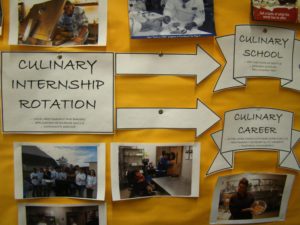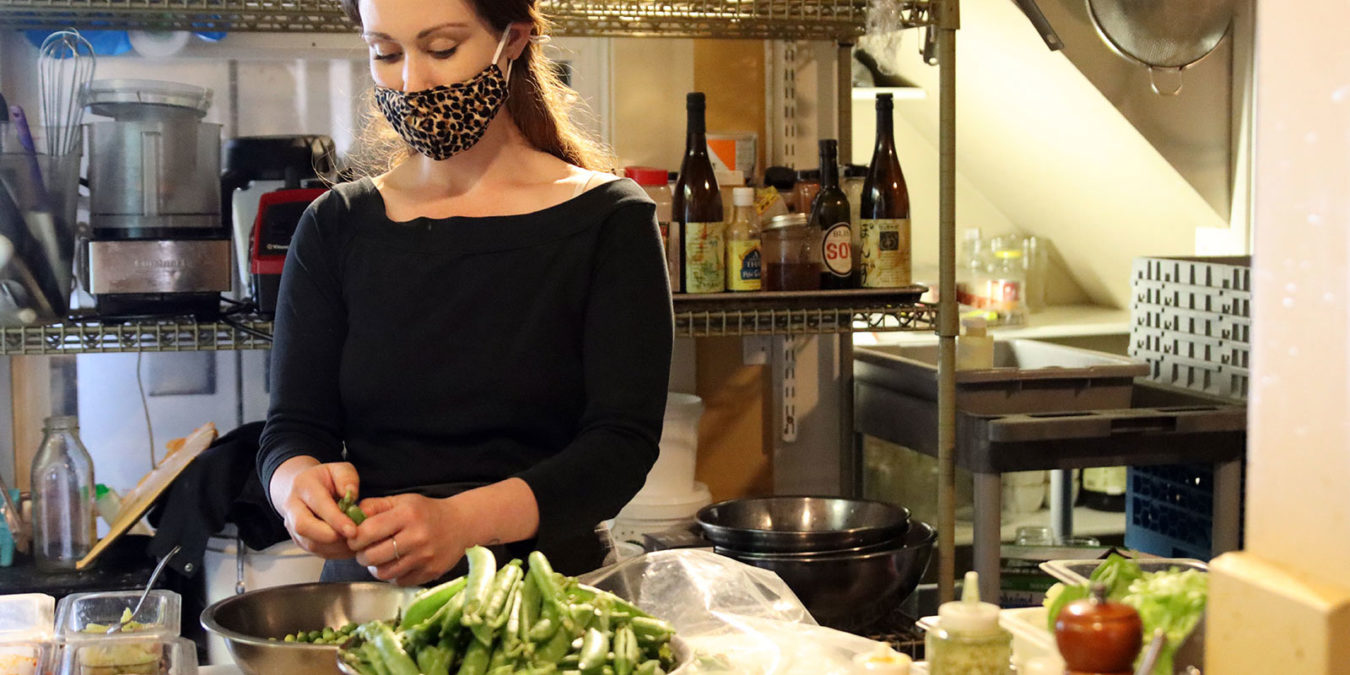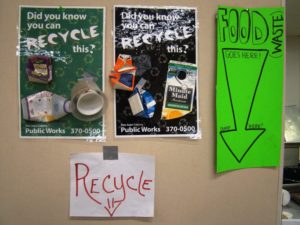With a little seed money and a 1-year grant, they developed agreements with local farmers, producers, and suppliers, to provide the raw ingredients they would need to cook nutritious, palate-pleasing lunches. Their goal was to make the program completely sustainable within the school district, using as much locally-grown foods as possible. The numbers clearly show they have landed on the path to success. As of December, the program is in the black.
They prepare all the meals from scratch without additives, stabilizers, high fructose corn syrup and pre-processed items. In doing so, they have not only improved the school district’s bottom line, they’ve also created a new interest in dining among students, teachers and the larger community. More students are now staying on campus to eat the school-provided lunch instead of heading off campus for high-priced diner food; consequently, administrators have noticed a decline in the 5th period truancy rate; kids are just hanging around school more.
In addition to procuring the local ingredients, another important component of the program is student involvement. It starts with Culinary Arts 1 & 2 and Baking 1, where students learn basic cooking and knife skills, recipe comprehension, and culinary math . If students decide they would like to continue, they move into the next tract – Chef 1.0 and 2.0, and International, where they learn the basics of food service skills, get their food handlers permit, develop a portfolio of recipes, and rotate into the hands-on kitchen work.

Chef 2.0 is actually a leadership type of role, where the students help teach those entering the program and about the kitchen. They then move on to required internships and resident jobs in the community. With 13 student chef interns in the kitchen, and 6 students rotating in from the lower level classes, there’s a lot of instruction going on. Chef Andy points out that everything takes longer when teaching, and it’s not a classroom where you can stop and explain things easily – they have meals to get out.
The students produce approximately 550 lunches and 50 breakfasts daily. About 400 of those meals are transported to the elementary school and some of the other private schools. In addition, they prepare the “Grab ‘N Go” foods sold in the Student Store – a sandwich of the day, cookies, fruit and other easy, quick and healthy snacks. The store is staffed by Special Needs children, who learn real-world job skills by taking customer’s orders, counting change, and understanding good customer service.

Not only do the kitchen staff supervise meal production, they supervise meal “selection.”
A monitor stands at each buffet line, making sure the young diners have selected appropriate portions of and variety of proteins, vegetables and fruits; in other words, the kids can’t have 4 slices of pizza and no vegetables on the plate. Elementary students are encouraged to make sure they have “a colorful plate” – fruits and vegetables come in all different colors, and are an easy way to help younger children develop their palate.



